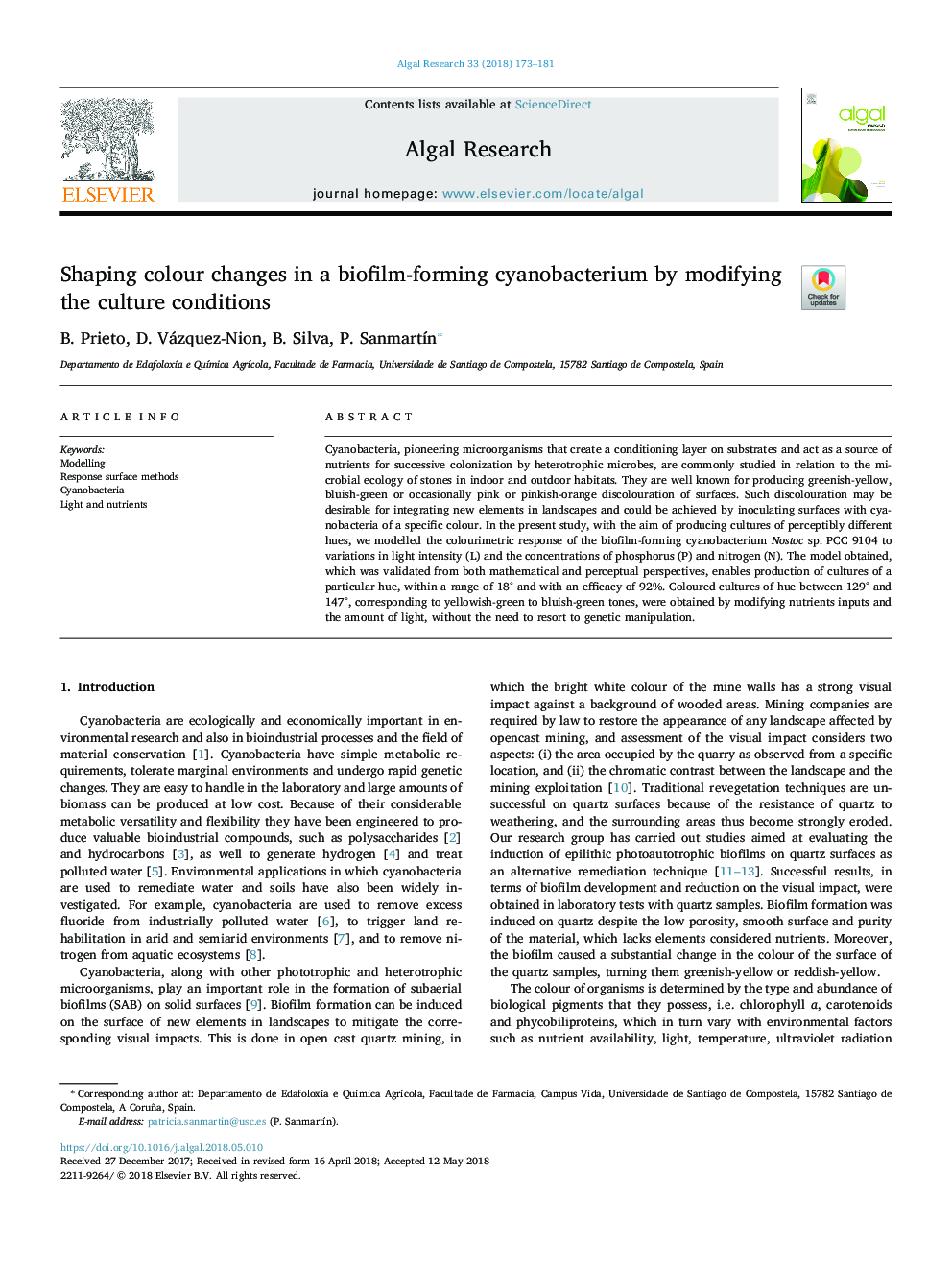| Article ID | Journal | Published Year | Pages | File Type |
|---|---|---|---|---|
| 8085625 | Algal Research | 2018 | 9 Pages |
Abstract
Cyanobacteria, pioneering microorganisms that create a conditioning layer on substrates and act as a source of nutrients for successive colonization by heterotrophic microbes, are commonly studied in relation to the microbial ecology of stones in indoor and outdoor habitats. They are well known for producing greenish-yellow, bluish-green or occasionally pink or pinkish-orange discolouration of surfaces. Such discolouration may be desirable for integrating new elements in landscapes and could be achieved by inoculating surfaces with cyanobacteria of a specific colour. In the present study, with the aim of producing cultures of perceptibly different hues, we modelled the colourimetric response of the biofilm-forming cyanobacterium Nostoc sp. PCC 9104 to variations in light intensity (L) and the concentrations of phosphorus (P) and nitrogen (N). The model obtained, which was validated from both mathematical and perceptual perspectives, enables production of cultures of a particular hue, within a range of 18° and with an efficacy of 92%. Coloured cultures of hue between 129° and 147°, corresponding to yellowish-green to bluish-green tones, were obtained by modifying nutrients inputs and the amount of light, without the need to resort to genetic manipulation.
Related Topics
Physical Sciences and Engineering
Energy
Renewable Energy, Sustainability and the Environment
Authors
B. Prieto, D. Vázquez-Nion, B. Silva, P. SanmartÃn,
